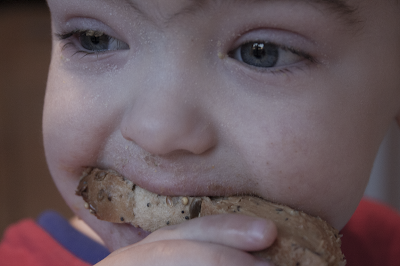As I want this project to act as an extension to last year's project, my editing style will be similar, in keeping with the style of the project.
Saying that, I generally use these techniques throughout most of my photos - whether casual photos or for projects. I like to keep things simple but effective, and I don't like too much colour.
Below is an in-depth explanation as to how I edit in Photoshop. I use these techniques for all my images, changing them to suit the style (ie, some may need more exposure than others, more contrast, etc).
I start with an image:
I then use the pictured features to adjust my image. As mentioned, I like to keep things simple, so there isn't a drastic change, but enough to see a difference.
My photo may look too light here, but I will change it slightly later to add more "depth" to the image. I realise that I need to keep my images slightly lighter on screen, as when they print they generally come out slightly darker, hence the change in exposure and whites.
This is the image I then base everything else around.
To add the "depth" I mentioned before, I use curves to adjust the lights/darks and contrast of the image. By upping the exposure, whites, lowering the contrast and blacks in the original RAW edit mode, my image looks slightly 'white washed'. To add back the depth, the dark colours that provide contrast, the curves function achieves this. As pictured, it doesn't take a lot of adjusting to add depth to the photo. I've added a point at a point of the grey histogram which effects the lighter colours/tones, and one lower down to adjust the darker tones. As said before, I know my images will print darker than as seen on screen, so the lower point isn't matching the grey histogram's point as it would be way too dark.

After adjusting the curves, I re-do the saturation and lightness slightly. I adjust the sliders until the photo looks "right" to me. The saturation of the photo is perfect in my eyes, as anymore and his skin turns pink and his eyes are superficially blue (although his eyes are very blue anyway!). Additionally, as I upped the exposure and whites so much originally, there's a little lee-way in terms of the saturation. I've very very slightly adjusted the lightness as I felt it was a little too white - however, when it comes to printing, I may re-adjust this again. Better to print a few different versions with different lightnesses to ensure I can pick the best looking photo after printed.

Now for the "real" editing. Although the point of this image is to show my nephew's blunt, slightly jagged fringe, there are some stray hairs that I feel deflect away from the fringe, and are generally distracting and messy. This close up shows the three single strands of hair that for me, really distract away from the image. Therefore, by using the clone stamp tool, I will very slowly and carefully erase the stray hairs.
By zooming in extra close (this is the far right single strand of hair), I use a small clone stamp brush, with a very low hardness (to avoid harsh looking editing), to carefully edit out the hair. This picture shows 90% of the work done - the mid-left section of the photo very slightly shows a more blurred area of skin, which is where the hair was. As this is so close, when zooming out it's unnoticeable and shouldn't be obvious when printed.
This image shows the strand of hair gone. Magic! I then repeat this step for each strand of hair, saving frequently just in case Photoshop freezes, or something awful happens.
The last things to edit out are some imperfections in the image. In this case, there is a small area of shiny-looking small spots just above his eye and under his eyebrow. I don't know what it is - probably something on my nephew's skin, but I don't like it in the image. The shininess makes it look as if I've done some really bad editing! Therefore, I shall edit it out in the same way I edited the strands of hair - with the clone stamp tool. There is also a small white dot on his lower eyelash - once again, no idea what it is, but I want to get rid of it.

This is the final edited image. The shiny area above his eye is gone, as is the weird white dot on his lower eyelash, and the three strands of hair. He seems to have a very small mole on his nose, in line with his eye, but I think to remove that would be taking my editing too far, as that is his natural face. Yes, his hair is his natural hair which I have edited out, but his hair will be cut and isn't permanently like that - whereas this mole will be on his face probably forever.
Below are the original and edited images:
Overall, the main changes (I think) are the lowering in saturation, which makes the image seem more stark, bare and natural; the editing out of certain imperfections, which help to keep the viewer concentrated on the main focus of his fringe and eyebrow(s); and the general lightening of the image, which not only brightens his face up which is easier on the eyes, but helps to brighten the main focus of the image too.
This photo isn't a drastic change - luckily I shot the photo in good, natural light and the photo just 'happened', which is rare, so there wasn't too much to edit. However, this is a good example of how I edit the majority of my images. Obviously it's harder with photos that aren't shot in good light as too much editing can lead to a lot of noise.



















































